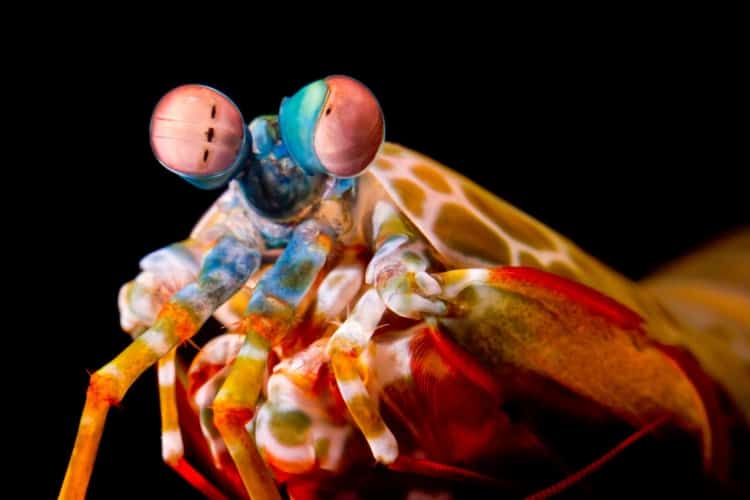Researchers from the University of Bristol have claimed that the unusual eye movements of the mantis shrimp could be replicated to produce an advanced automated visual system.

The mantis shrimp has long been a point of fascination for scientists and engineers. Raptorial appendages at the front of its body can be extended at the same velocity as a bullet fired from a .22 calibre rifle, striking prey with 1,500 Newtons of force. The speed is so great that water around the limbs boils instantly and causes a supercavitation, and the crustaceans have even been known to shatter the glass in aquarium tanks.
But it’s the mantis shrimp’s eyes that are perhaps most fascinating. Rather than the three types of colour receptive cones that humans have (blue, red and green), the mantis shrimp has an incredible 12. They can see in infrared and ultraviolet, and can even see the polarisation of light. On top of this, the team from Bristol has now discovered that the creatures can enhance that polarisation detection by rolling their eyes.
Research published in Nature Communications outlines how the mantis shrimp actively improves its polarisation vision through the eye-rolling behaviour, something that would have the opposite effect in most other creatures. The discovery was made by PhD student Ilse Daly, from the Ecology of Vision research group at Bristol’s School of Biological Sciences.
"We have known for a while that mantis shrimp see the world very differently from humans," said paper co-author Dr Nicholas Roberts, also from the School of Biological Sciences.
"They can use 12 different colour channels (we use only three), and can see the polarisation of light. But the eye movements of mantis shrimp have always been something of a puzzle. Intuitively, a stable eye should see the world better than a mobile one, but mantis shrimp seem to have found a different way to see more clearly."
According to the researchers, the discovery has exciting implications for robotics. If the mantis shrimp’s extraordinary powers of sight can be replicated, it could lead to the development of an automated visual system with a range of applications, including underwater exploration and materials analysis.




Nanogenerator consumes CO2 to generate electricity
Nice to see my my views being backed up by no less a figure than Sabine Hossenfelder https://youtu.be/QoJzs4fA4fo